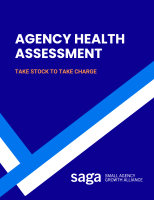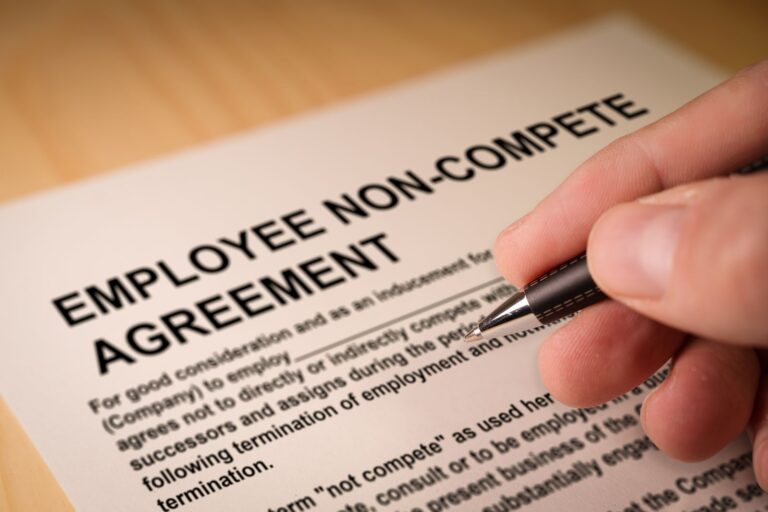With some parts of the United States and the world beginning to relax stay-at-home orders implemented during the Covid-19 crisis, many agency leaders will soon need to determine when and how to re-open their offices.
While it hurts — financially and otherwise — to be making rent or mortgage payments on office space you are not currently using, re-opening isn’t a decision to rush into.
For agencies with multiple offices, the timing and approach may differ based on local circumstances. While some jurisdictions may provide clear guidelines, it is likely that individual businesses will need to make some decisions for themselves.
Many agencies will likely opt to continue to work remotely even after stay-at-home orders are lifted in their areas, while others may be more anxious to return to a greater sense of normalcy.
Re-opening isn’t a decision that can be taken lightly, given all of the health and economic challenges this crisis presents. A clear plan will help agencies better prepare for that day.
Here are some things that agency leaders need to consider.
When to re-open
Just because you are allowed to re-open doesn’t mean that you have to do so. Local businesses that cannot operate remotely obviously feel much more pressure to get back to normal-is operations, but even some of them seem poised to take a wait-and-see approach.
Most agencies are fortunate enough to be able to conduct most business remotely. It isn’t necessarily convenient, but most of the obstacles are surmountable.
That said, a day will come when it does make sense to re-open your office.
Some of the things you should consider with regard to timing include:
- Your confidence in ensuring the safety of your staff, as best as possible
- Your team’s comfort level in returning to the office
- Your preparation for the operational changes needed to re-open
Remember that this is not a race and you need to make sure that you and your team are confident in this important decision.
Optional vs. mandatory re-opening
Many agencies seem to be leaning toward a soft re-opening where employees are first given the choice of whether to work from home or come into the office.
With most schools closed for the academic year, many parents with younger children have serious childcare challenges, especially if closures remain in place for daycare facilities.
On the other hand, there are many employees who would welcome the chance to get out of their homes, either for an improved work environment or simply to get a change of scenery.
Agency leaders should be prepared to be flexible as everyone navigates the next stage of this crisis.
Office layout changes
Is your office set up to facilitate social distancing? Even in locations that are lifting stay-at-home requirements, most are still requiring or encouraging social distancing as much as possible.
For open plan offices, you may want to consider larger dividers between workspaces or keeping every other desk vacant. This may require changing expectations about the days and hours that individuals can come into the office.
Break rooms and conference rooms where people tend to congregate may need to be closed or modified to discourage congestion.
Some guidelines are suggesting improved air flow — something that may or may not be feasible depending on your office environment.
Office cleaning procedures
Up until now, most of us judged our office cleaners based on whether the trash was emptied, the carpets vacuumed, the break room cleaned up, and some basic dusting completed.
That’s clearly no longer enough.
Unfortunately, many office cleaning companies aren’t well equipped to do the type of more thorough cleaning that the current situation would seem to demand.
Some agencies have been quoted thousands of dollars for an initial deep-cleaning, with substantial fees for ongoing work.
You will need to find the right balance of risk/reward for your own business. Even those willing to spend the money may not be able to find available services, given the explosion in demand for commercial cleaners.
Some of the decisions you will need to make include:
- How frequently to have the office professionally cleaned
- What level of thoroughness you will require/pay for
- Cleaning considerations for spaces maintained by the landlord and/or shared with other tenants
Operational processes
Once you have the office ready for employees, you need to think about what their days in the office will look like.
It will likely not be business-as-usual for the foreseeable future, and you will need to consider:
- Access to hand sanitizer for all employees
- Policies regarding mail/package handling
- Rules about shared workspaces and equipment
- Guidelines for break rooms and conference rooms
- Daily temperature checks and health questions
Essentially, you need to think through all of the activities your team engages in throughout a typical day and consider what alterations you may want to make or guidelines you choose to establish.
Personal protective equipment
Agencies aren’t medical facilities, but many local authorities are encouraging the use of at least basic protective equipment outside of the home, including things like face coverings and gloves.
Obviously, you need to ensure that your team follows relevant local rules, but you need to consider whether you will put more stringent requirements in place.
For example, will you suggest face coverings or will you require them? Or will you allow individuals to make their own choices? Keep in mind that the stated purpose of these coverings is to protect other people, so you need to consider how your team members will feel if other employees are uncovered.
Similarly, you need to think about whether you want to require or encourage those who handle mail or packages to wear gloves.
Whatever approach you choose, you should put it in writing to avoid misunderstanding.
However, if you are going to require certain types of equipment (like gloves) you need to think about whether you will be able to provide them since they are in short supply. If not, what is your alternative approach?
Business/personal travel policies
While business travel is unlikely to come back ion any meaningful way for quite some time, you should think about whether you will be sending employees to meet with clients at their offices (assuming clients are permitting that).
As with coming to the office, you need to make sure the individual team members are comfortable with what they are being asked to do. Keep in mind that some may have personal or family risk factors that you are not aware of that could impact their comfort level.
As quarantine fatigue sets in and many places (at least in the United States) start experiencing warmer weather, the desire for many people to escape their homes and go places will only increase.
How will you handle employees who engage in personal travel? Will you ask them to remain home for a period of time upon return, especially if they travel out of state? If you are in a low-impact area and someone visits family in a high-impact area, are you comfortable with them coming right back to the office?
Visitor policies
Many offices will begin to open with rules that prevent non-employees from entering whenever possible.
If you choose to allow visitors — including family members of the owner or employees — what rules will be put in place for them? At a minimum, they should be at least as strict as those for employees, and likely even more thorough.
You should also consider keeping records of visitors so that in the event someone becomes infected, you can more easily assist in contact tracing.
Employee communications
Whatever you decide to do, you should communicate clearly with your employees.
That should start with inviting their feedback and participation in the decision about when and how to re-open. While the agency leaders need to make this decision, it should involve understanding what the team wants to do (and is comfortable with).
In addition, team members may have valuable suggestions on how to make re-opening as safe and comfortable as possible for everyone.
Once the decision has been made, make sure that the elements of your plan are distributed to all employees. By having the policies, procedures, and safeguards in writing you will ensure that everyone understands the steps being taken.
Throughout the process — including after re-opening — you should continue to solicit feedback and make changes where appropriate. These are trying times for many and your job as a leader is to make your team as confident as possible in your approach.
Integrating your team
As offices re-open, it is likely that there will be a greater mix of in-office and remote workers. When everyone is working remotely, it is a level playing field, but as some employees begin to return to the office, it can make those who must (or choose to) continue to work remotely feel left out.
Agency leaders must work hard to build an inclusive atmosphere in this blended environment. Having everyone appear on Zoom calls individually, for example, is a preferred approach to having a group in a conference room with remote workers segregated alone. Plus it improves social distancing efforts to keep everyone at their own desks.
It is especially important not to inadvertently stigmatize those workers who do not immediately return to the office. There should not be undo pressure on anyone to do something that would make it harder for them to meet family commitments or would potentially put someone’s health at additional risk.
Handling infection/exposure
It would be unwise to re-open your office without considering what to do when/if an employee becomes infected or is exposed to someone who tests positive for Covid-19.
You need to plan for questions like:
- Will you close the whole office for a period of time even if your local jurisdiction doesn’t require it?
- How will you notify employees and visitors who may have been in contact with the individual?
- What is your external communications plan in such an event (with clients, partners, and other stakeholders)?
- When will you allow that individual to return to the office?
While some of these decisions may be mandated by government authorities, the likelihood is that you will need to decide whether to go above and beyond.
New HR policies
You should consider updated your employee handbook to reflect new policies that you may choose to adopt.
Federal regulators in the United States have already made clear that employers have considerable leeway to adopt policies to protect the safety of all workers.
For example, you should think about new provisions like:
- Employees must not come to the office with a fever and be fever-free without medication for at least 24-48 hours before returning to work. (This is similar to the policies that many schools have had for students even prior to Covid-19.)
- Employees who feel sick should work from home or take a sick day. If the employee feels sick during the day, they should immediately head home and notify their supervisor.
- The agency reserves the right to take employee’s temperatures upon arrival to the office and at other times throughout the day.
- Employees should stay home and report to their supervisor any known exposure to someone who tests positive for Covid-19 until the supervisor determines it is safe for them to return to the office.
Of course, you need to have any such policies reviewed by competent human resources and/or legal counsel to ensure compliance with all applicable laws and regulations.
Liability considerations
There is no way to re-open your agency’s offices in a risk-free way, so you will inevitably need to weigh the benefits of opening versus the potential costs of doing so.
You should discuss with your lawyer any liability concerns that you may have so that you understand your legal risk if an employee or visitor becomes infected in your office.
The policies and procedures that you adopt should be designed to reduce your risk as much as reasonable and create the safest possible environment for your team.










